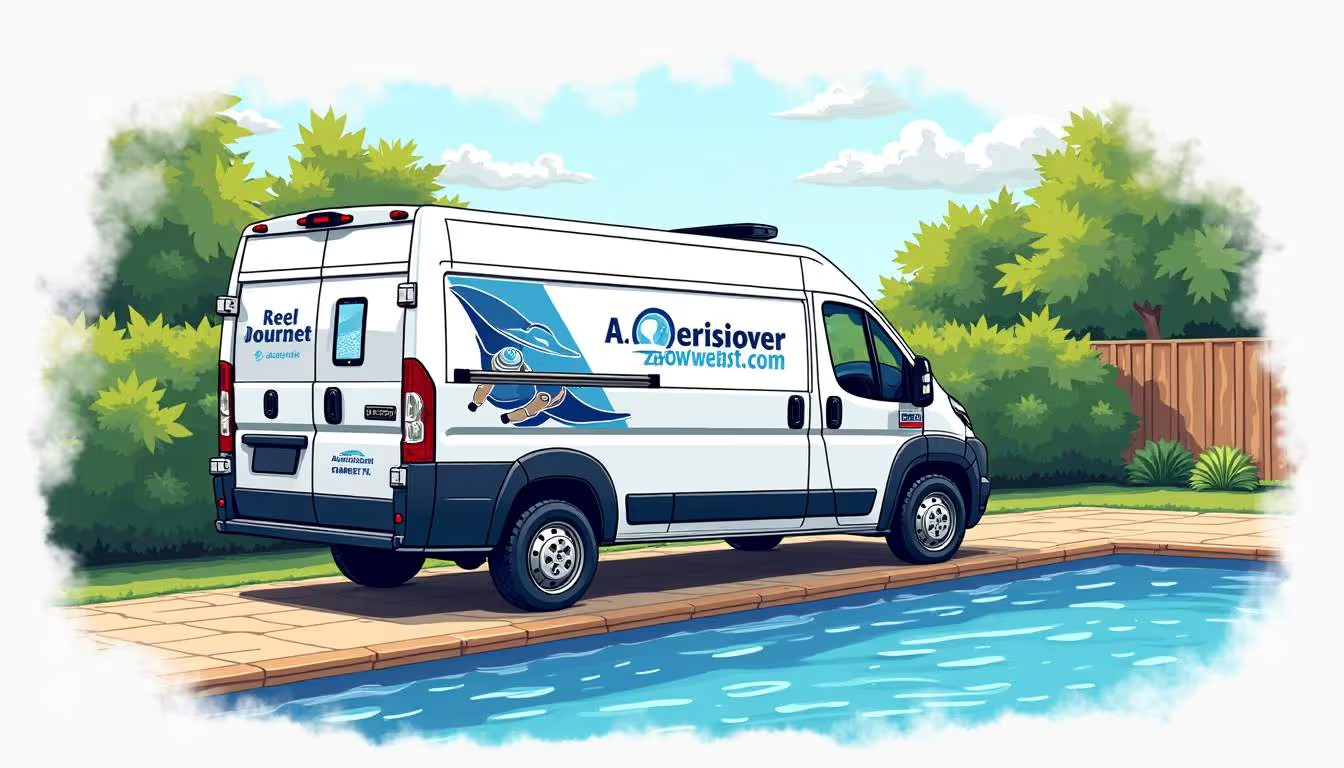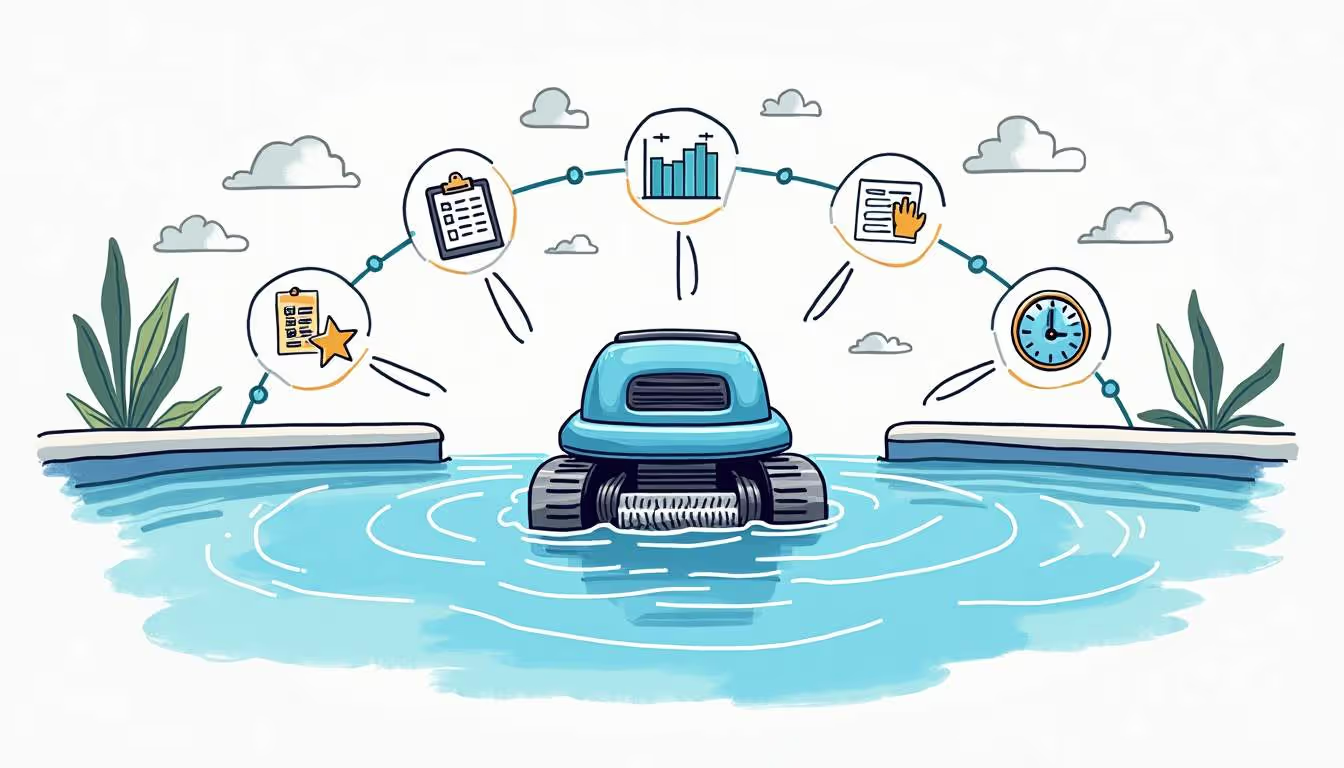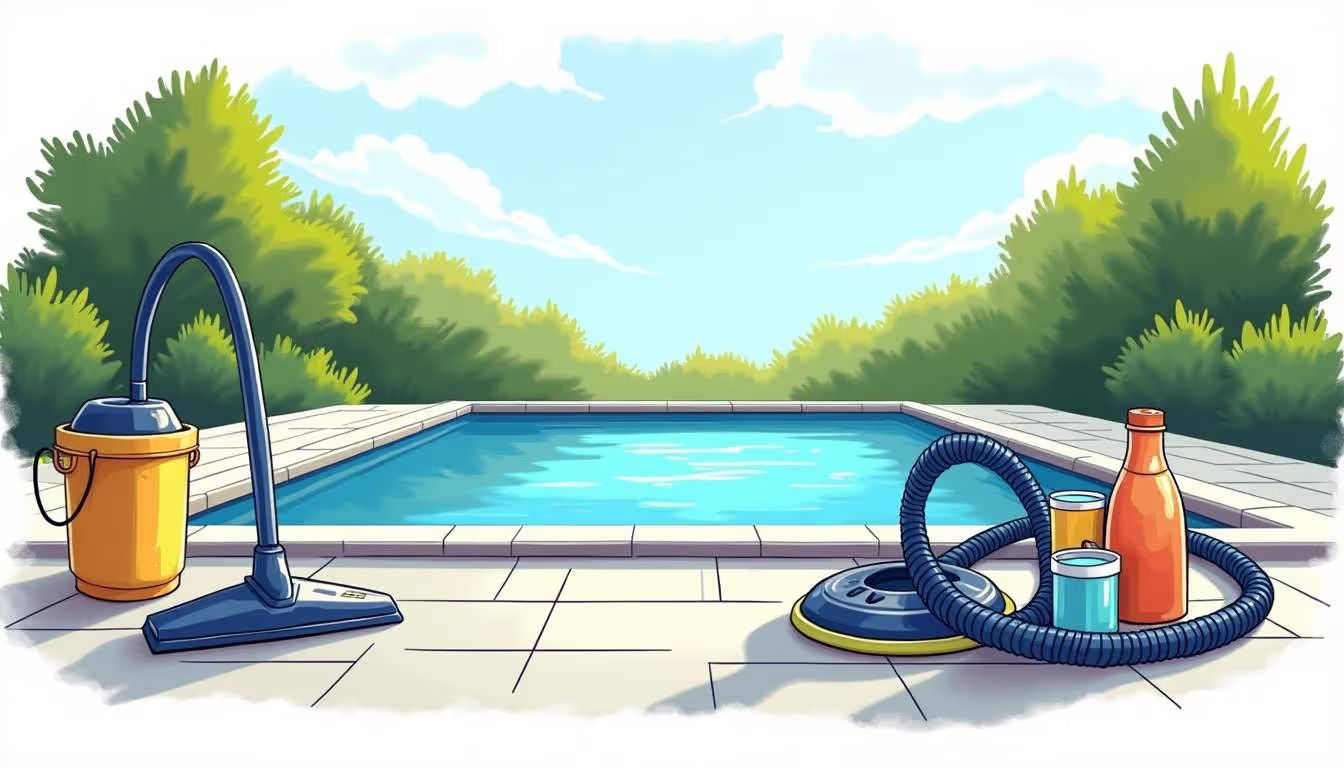Optimizing Pool Service Operations: Strategies for Success
The modern pool service landscape is more demanding than ever. Homeowners want crystal-clear water all year, commercial facility managers require strict compliance with health codes, and competition from low-overhead startups continues to tighten margins. At the same time, rising chemical costs and a national labor shortage have created new cost pressures that squeeze profitability. Forward-thinking operators are responding by streamlining workflows, investing in technology, and building data-driven cultures that improve efficiency while delighting customers. The following strategies outline how an industry-leading software platform can help pool professionals thrive in a market that is expected to reach $27 billion in annual service revenue by 2028.
The Evolving Landscape of Pool Service Management
Pools are no longer luxury amenities for warm-weather regions; they are lifestyle investments across North America. According to the Pool & Hot Tub Alliance, nearly 10.7 million residential pools now operate in the United States, up 1.3 million from a decade ago. That expansion has drawn new entrepreneurs into the industry, forcing established companies to differentiate with speed, transparency, and superior water quality results.

Market Growth and Customer Expectations
Consumer surveys show that 73 percent of pool owners expect next-day service when they submit a work order online. They also expect clear digital communication: job confirmation emails, arrival notifications, and post-visit reports complete with chemical readings. Providers that cannot meet these expectations risk losing accounts within the first season. An integrated platform automates appointment reminders, pushes GPS-stamped service reports to clients, and logs every interaction, turning a fragmented process into a cohesive customer journey. This shift in expectations is not merely a trend; it reflects a broader cultural change where immediacy and transparency are paramount. Customers are increasingly accustomed to on-demand services in other sectors, such as food delivery and ride-sharing, and they bring those expectations into their interactions with pool service providers.
Technology as a Competitive Differentiator
While 58 percent of pool companies still depend on paper route cards, the top-performing 20 percent rely on cloud-based software that synchronizes scheduling, inventory, and billing in real time. Automated routing trims an average of 14 miles per technician per day, which translates to nearly $4,000 in annual fuel savings per vehicle. Moreover, digital data capture ensures that if a technician leaves the organization, the institutional knowledge of each account remains preserved within the platform. This technological edge not only enhances operational efficiency but also empowers companies to provide personalized service. For instance, technicians can access historical data on each pool's maintenance history, allowing them to tailor their approach and recommend specific treatments based on past issues. Furthermore, the integration of IoT devices in pool management is on the rise, enabling real-time monitoring of water quality and equipment performance, which can preemptively alert owners and service teams to potential problems before they escalate into costly repairs.
Standardizing Field Processes for Consistency
A single cloudy pool can erode trust built over years. Consistency starts with repeatable processes that remove guesswork from fieldwork, so every customer receives the same level of care regardless of which technician shows up. By implementing standardized protocols, companies can ensure that every technician is equipped with the same knowledge and tools, leading to a uniform service experience. This not only enhances customer satisfaction but also builds long-term loyalty, as clients come to rely on the dependable quality of service provided.
Route Optimization and Time Windows
Efficient routing software assigns stops based on travel time, traffic patterns, and promised arrival windows. This reduces windshield time by up to 25 percent and allows organizations to fit additional accounts into the same workday. The platform automatically recalculates when a customer reschedules, keeping dispatchers from juggling manual spreadsheets and freeing them to focus on coaching technicians or addressing high-priority calls. Moreover, the integration of real-time traffic data ensures that technicians can avoid delays caused by accidents or construction, allowing for more accurate arrival estimates and improved customer communication. This proactive approach not only enhances operational efficiency but also reinforces the company’s commitment to customer service.
Digital Water Testing and Reporting
Handwritten log sheets are prone to transcription errors that can lead to fines during health inspections. Digital photometers paired with mobile apps upload chemical readings directly to the job record, ensuring accuracy to 0.01 ppm. Color-coded dashboards alert technicians if sanitizer or pH levels fall outside tolerances, prompting immediate corrective action before algae or scale formation occurs. This documented proof of service protects the company during liability disputes and reinforces professionalism in the eyes of clients. Furthermore, the ability to track historical data over time allows technicians to identify trends and potential issues before they escalate, enabling a more proactive approach to pool maintenance. By leveraging technology in this way, companies can not only enhance compliance but also position themselves as leaders in the industry, setting a standard for quality that competitors will strive to meet.
Leveraging Data for Proactive Maintenance
Reactive “break-fix” models are expensive. Emergency green-to-clean visits might bill at a premium, but the truck rolls, overtime, and replacement chemicals quickly devour margins. Instead, successful operators harness data to anticipate issues and intervene before equipment fails or water quality deteriorates.

Predictive Analytics Reduces Emergency Call-Outs
An industry-leading platform aggregates pump run-time, filter pressure, and sanitizer consumption across thousands of service calls. Machine-learning models flag anomalies—such as a filter that is clogging faster than historical norms—and automatically generate a work order for preventive maintenance. Early adopters report a 32 percent decrease in emergency call-outs within six months, freeing technicians to focus on planned routes while elevating customer satisfaction scores.
Inventory Control and Chemical Usage Insights
Knowing exactly how much calcium hypochlorite sits on each truck eliminates guesswork and reduces costly over-purchasing. Barcode scanning at the warehouse and truck-level inventory counts inside the mobile app reconcile stock in real time. Management dashboards reveal per-account chemical spend, helping identify properties that consistently run hot due to heavy bather loads or equipment inefficiencies. Targeted recommendations—like upgrading to a variable-speed pump—transform raw usage data into revenue-generating upsell opportunities.
Empowering Technicians Through Mobile Tools
Technicians are the brand ambassadors customers see every week. Equipping them with intuitive mobile tools not only accelerates tasks but also boosts morale and reduces turnover, which currently sits near 38 percent across skilled trades.

Real-Time Communication and Upsell Prompts
When a technician notes corroded ladder hardware, a built-in upsell prompt can generate a parts quote and secure on-site approval with an electronic signature. Photo attachments flow automatically to the customer portal, eliminating the “he said, she said” confusion that often accompanies mid-season extras. Real-time chat with the office ensures that complex questions—such as warranty coverage—receive immediate answers, avoiding costly return visits.
Training, Certification Tracking, and Safety
The best mobile apps double as learning hubs. Short video modules on safe acid handling or advanced heater diagnostics can be assigned to individual technicians and tracked to completion. Certificates appear inside the technician’s profile, allowing dispatchers to assign qualified personnel to specialized commercial accounts that require Certified Pool Operator credentials. By pairing knowledge reinforcement with granular job tracking, companies report a 21 percent reduction in workplace incidents within the first year.
Delighting Customers with Transparent Experiences
Transparency builds trust, and trust fuels referrals. A survey by BrightLocal found that 87 percent of consumers read online reviews for local services, up from 81 percent before the pandemic. Positive digital word-of-mouth now drives more new pool service accounts than traditional door hangers or direct mail in many regions.
Self-Service Portals and Automated Notifications
Modern service portals allow customers to view upcoming visits, download invoices, and track the chemical history of their pool from any device. Automated texts that announce “Technician Sam is en route” reduce no-access situations, while post-service summaries often include before-and-after photos that delight homeowners. These touches turn a routine maintenance visit into a premium experience that justifies higher pricing tiers.
Review Generation and Reputation Management
Immediately after a technician marks the job complete, the platform can send a brief satisfaction survey. Positive responders are redirected to Google or Yelp, fueling a steady stream of five-star reviews. Negative feedback loops straight to management, allowing issues to be addressed privately before frustrations spill onto public forums. Companies that implement automated review campaigns typically witness a 200-percent increase in monthly review volume, translating to higher organic search rankings and accelerated growth.
Key Metrics Every Pool Service Company Should Monitor
What gets measured gets improved. Key performance indicators (KPIs) keep management focused on leading indicators rather than lagging outcomes. Core metrics include:
- First-time fix rate – the percentage of issues resolved without a return visit.
- Average cost per service stop – a composite of labor, chemical, and fuel expenses divided by total visits.
- Customer churn rate – accounts lost divided by total accounts at the start of the season.
- Technician utilization – billable hours versus total paid hours.
- Net promoter score (NPS) – a measure of customer loyalty benchmarked against industry averages.
A unified software platform pulls these data points from disparate modules and streams them to a single dashboard, allowing leadership to interrogate trends weekly instead of reacting to surprises at year-end.
Putting It All Together: A Continuous Improvement Framework
Excellence in pool service is never a single initiative; it is a culture of relentless optimization. By mapping every touchpoint—from initial quote to routine service to equipment replacement—operators can identify friction, automate low-value tasks, and elevate human talent where it matters most. Successive Plan-Do-Check-Act cycles, backed by robust analytics, foster a mindset where yesterday’s benchmark becomes tomorrow’s baseline.
Adopting a leading field-service management platform accelerates this journey. Companies that embrace end-to-end digitization routinely report double-digit profit margin improvements, faster cash flow thanks to same-day invoicing, and sharper competitive positioning. As the industry continues to expand and customer expectations climb, those who invest in standardized workflows, data intelligence, and transparent communication will not merely survive—they will set the standard against which all others are measured.







